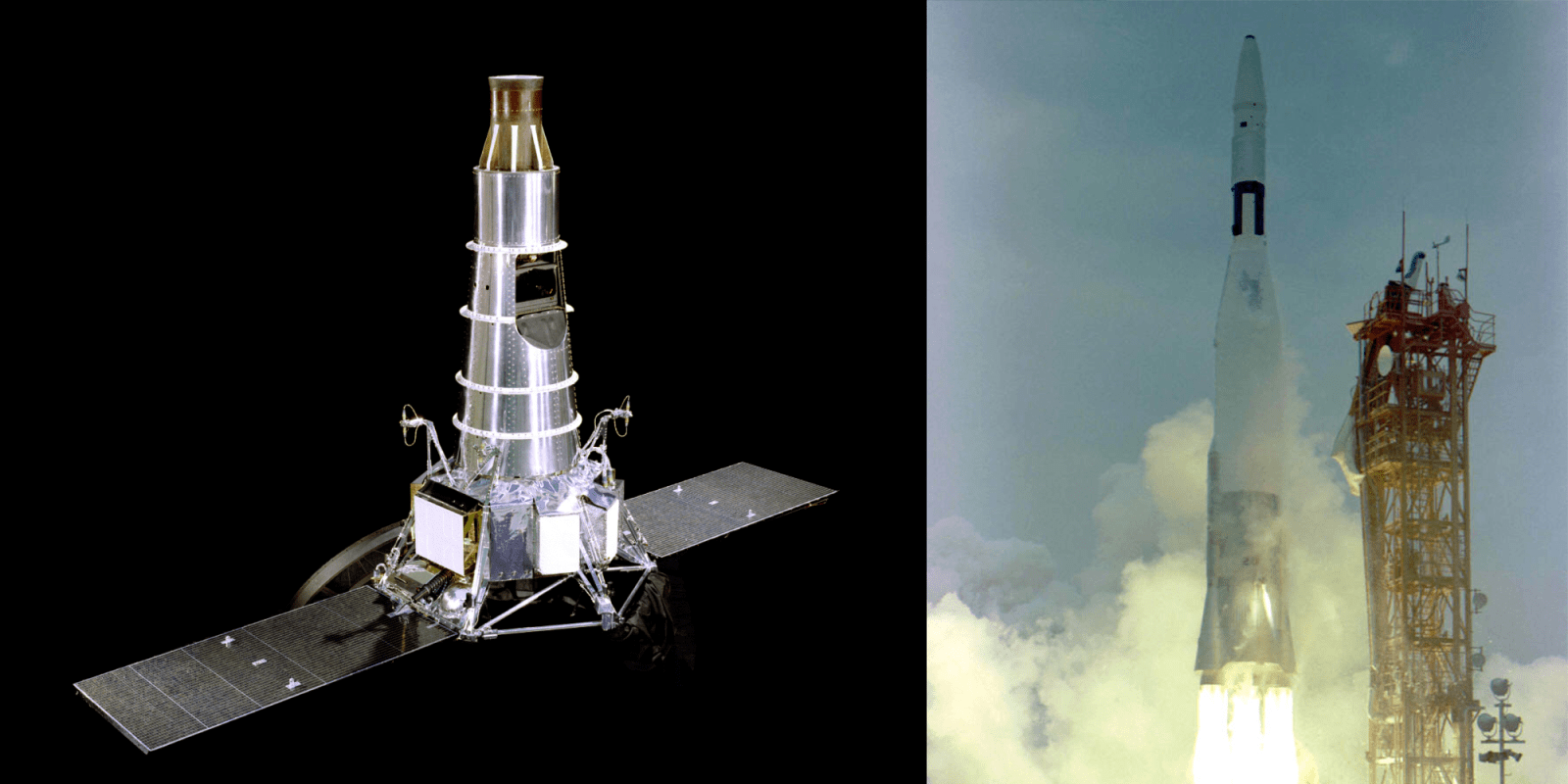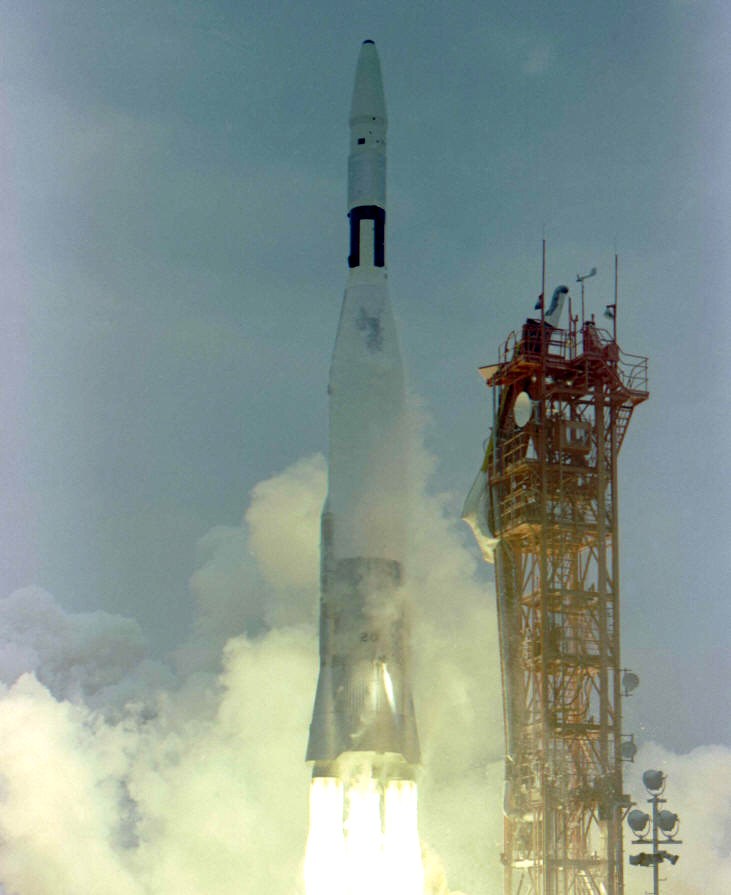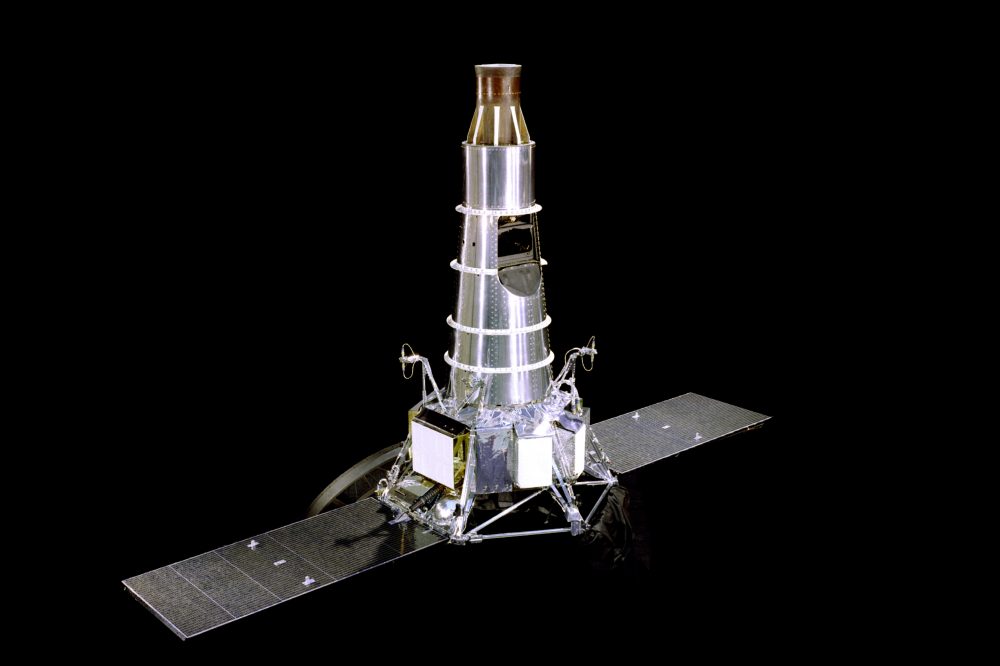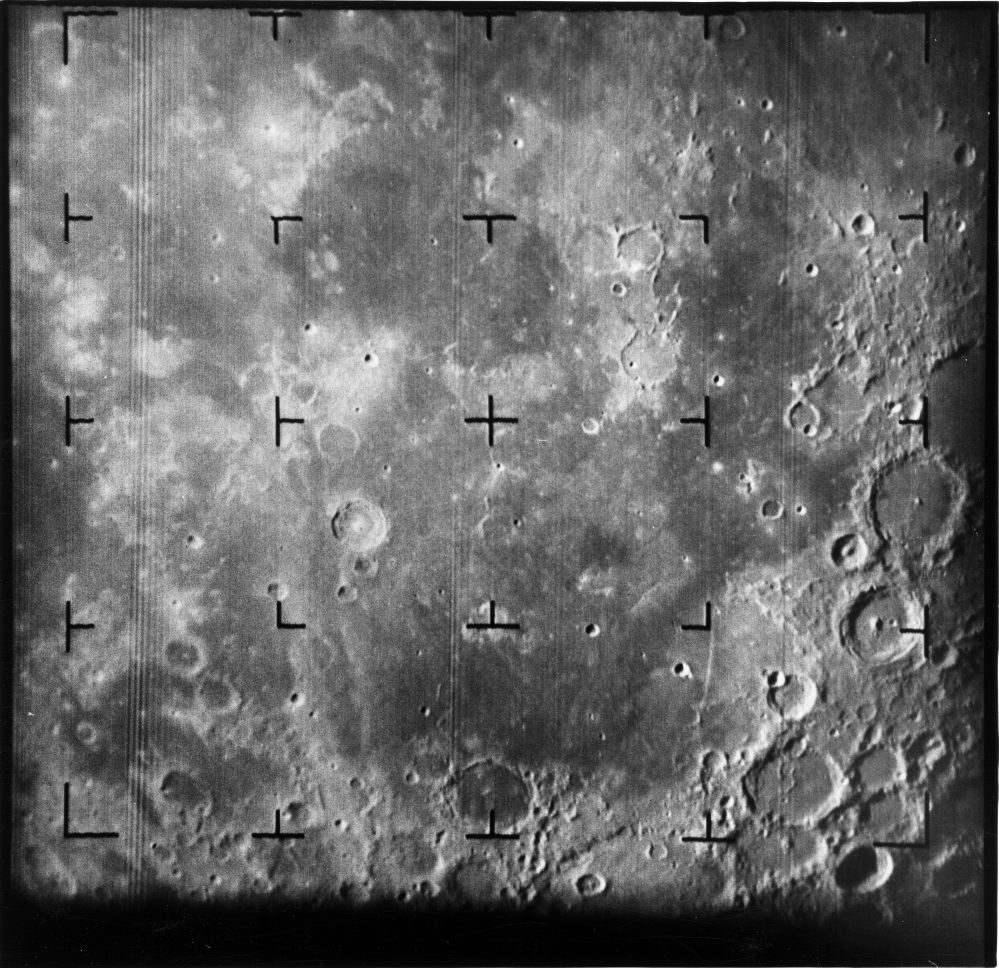
On this day in 1965, Ranger 9 impacted the Moon at 14:08:19 UTC with a relative speed of 2.67 km/s (5,972 mph). This impact concluded the 3-day mission of Ranger 9 and the overall Ranger program. This mission gathered important data needed for the later Surveyor program, and ultimately the Apollo program.
The Launch
Ranger 9 was launched aboard an Atlas-Agena B from Cape Canaveral Launch Complex 12 at 5:37 PM EDT (21:37 UTC). The Atlas booster would launch the Agena B and Ranger 9 into a suborbital trajectory that the Agena B would then circularize into a stable, parking orbit.
They would then wait in this orbit, traveling at 17,450 mph and an altitude of 115 miles, before the Agena B, would then fire its engine to insert Ranger 9 into a Trans-Lunar Injection (TLI) orbit.

The Coasting Phase
Ranger 9 detached from the Agena B shortly after the TLI burn and began coasting. The probe would then begin spooling up different systems that would either operate at a reduced power state or off completely to save on power. The spring-loaded solar panels would be deployed by blowing explosive pins that were restraining them. At this point Ranger 9 was traveling around 24,520 mph.

The next big event would be the mid-course maneuver to ensure Ranger 9 will get to the Moon’s gravity well. This maneuver would be completed around 16 hours into flight using the onboard engine. The attitude control thrusters on the Ranger probes were not strong enough to maintain control during the mid-course maneuver, so the maneuvering engine had jet vanes behind the exhaust that could redirect the exhaust to provide a reliable and cheap form of attitude control. Ranger 9 would re-enter its cruise state after the mid-course maneuver.
The Terminal Sequence
It is now about 1 hour to impact. By this point, ground controllers have already determined whether a terminal maneuver is required to properly orient the spacecraft and cameras. Ranger 6 and 7 did not have to perform this final maneuver as the attitude the spacecraft held during the cruise phase was satisfactory for imaging. However, Ranger 9 did perform this maneuver.
Commands for this maneuver were sent to Ranger 9 around 63 hours after launch to be conducted 1 hour until impact. This maneuver took about 34 minutes to complete. Meanwhile, Ranger 9 would have been traveling around 3,400 mph at an altitude of 3,940 miles.
A 1-minute camera warm-up sequence would be started around Impact-20 minutes. Ranger 9’s first image was taken at 13:49:41 UTC at an altitude of 1,468 miles. The spacecraft was constantly accelerating at this point as it is being pulled down by the lunar gravity.

Ranger 9 took 5,814 clear pictures before impacting the lunar surface. This was the first Ranger spacecraft to actually capture its demise as all the other Rangers had specific targets they were imaging all the way to the surface.
The Ranger program ended with Ranger 9 and totaled around $170M, $1.42B in 2021 when adjusted for inflation. The program paved the way for the Surveyor missions which both provided the most detailed information that paved the way for the first crewed landings on the Moon with Apollo.
Enjoy reading Space Explored?
Help others find us by following on Apple News and Google News. Be sure to check us out on YouTube, Twitter, Facebook, and Instagram, join our Discord!
FTC: We use income earning auto affiliate links. More.



Comments